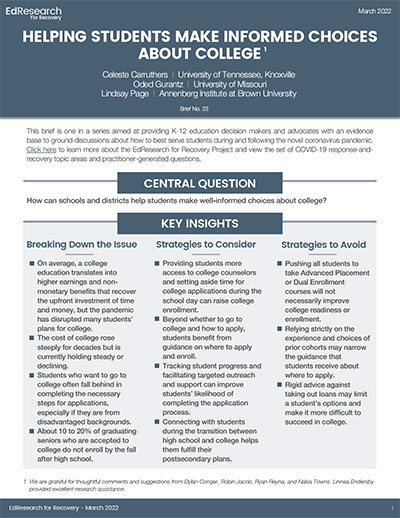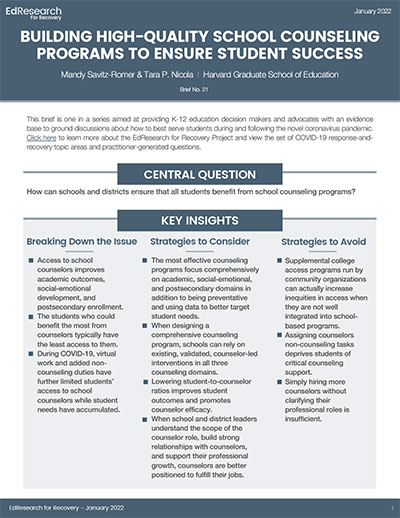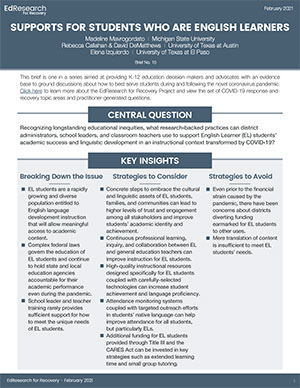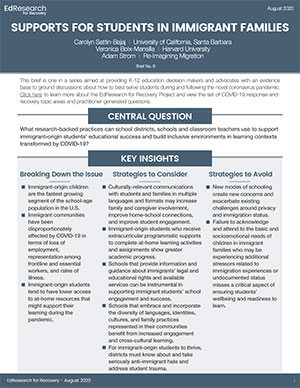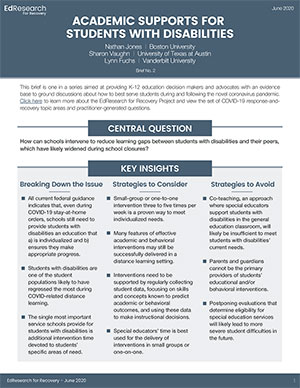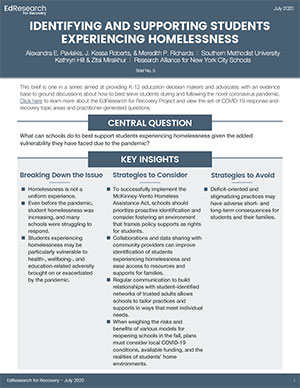Supporting All Students
Helping Students Make Informed Choices About College
Celeste Carruthers | University of Tennessee, Knoxville
Oded Gurantz | University of Missouri
Lindsay Page | Brown UniversityBuilding High-Quality School Counseling Programs to Ensure Student Success
Mandy Savitz-Romer | Harvard University
Tara P. Nicola | Harvard UniversitySupports For Students Who Are English Learners
Maddy Mavrogordato | Michigan State University
Rebecca Callahan | The University of Texas at Austin
David DeMatthews | The University of Texas at Austin
Elena Izquierdo | The University of Texas, El PasoSupport for Students in Immigrant Families
Carolyn Sattin-Bajaj | University of California-Santa Barbara
Adam Strom | Re-Imagining Migration
Veronica Boix Mansilla | Harvard UniversityAcademic Supports for Students with Disabilities
Nate Jones | Boston University
Sharon Vaughn | University of Texas at Austin
Lynn Fuchs | Vanderbilt UniversityIdentifying And Supporting Students Experiencing Homelessness
Alexandra Pavlakis, J. Kessa Roberts, Meredith Richards | Southern Methodist University
Kathryn Hill, Zitsi Mirakhur | Research Alliance for New York City Schools
